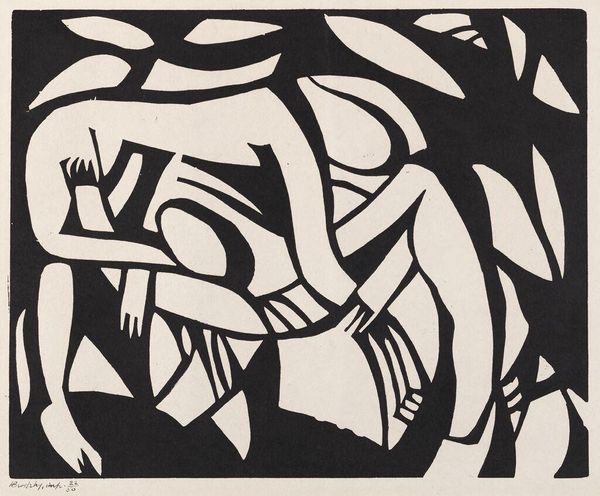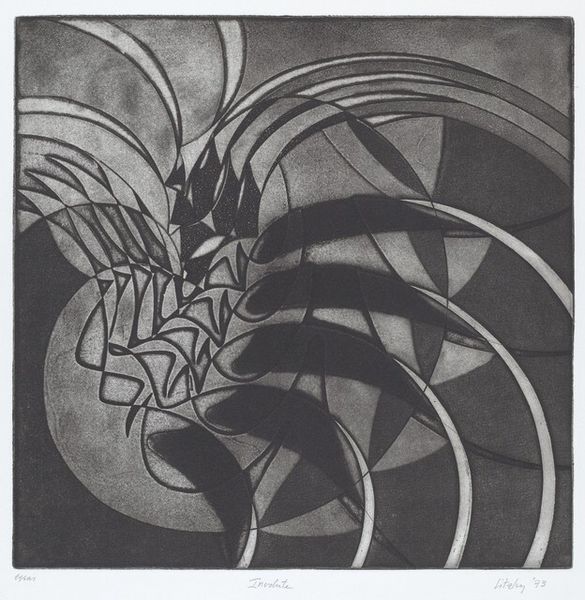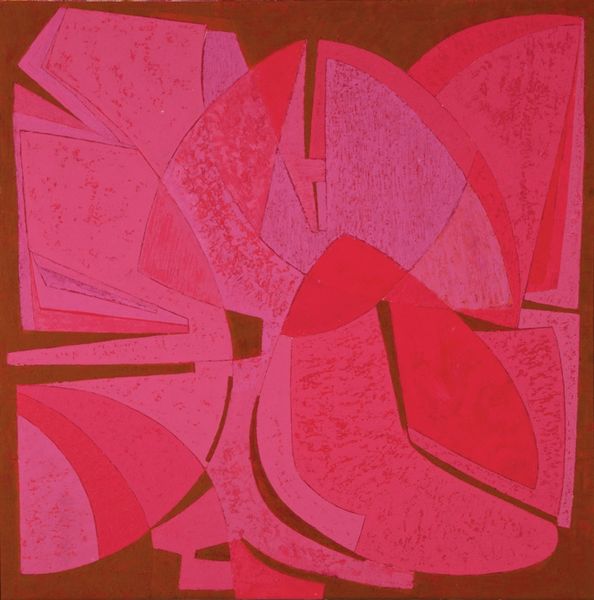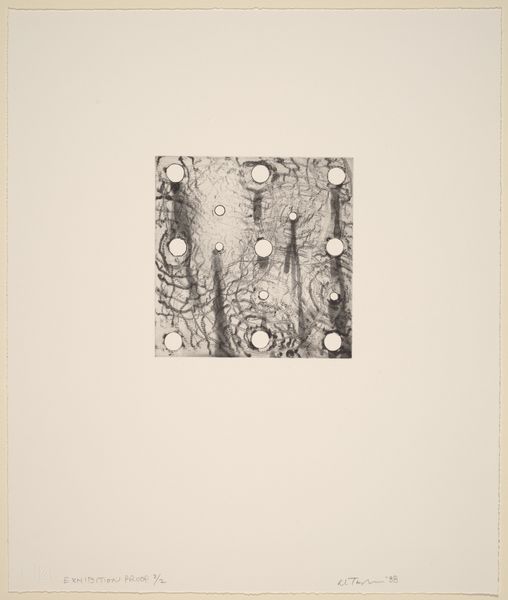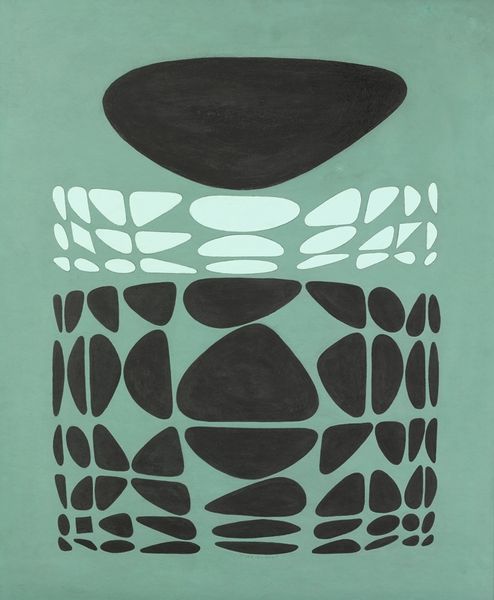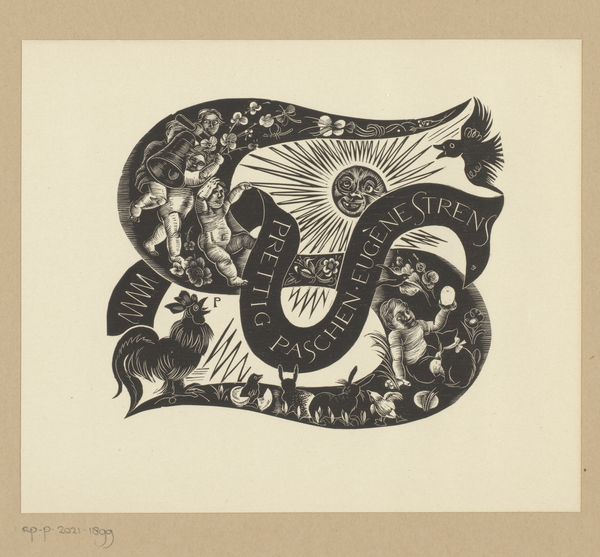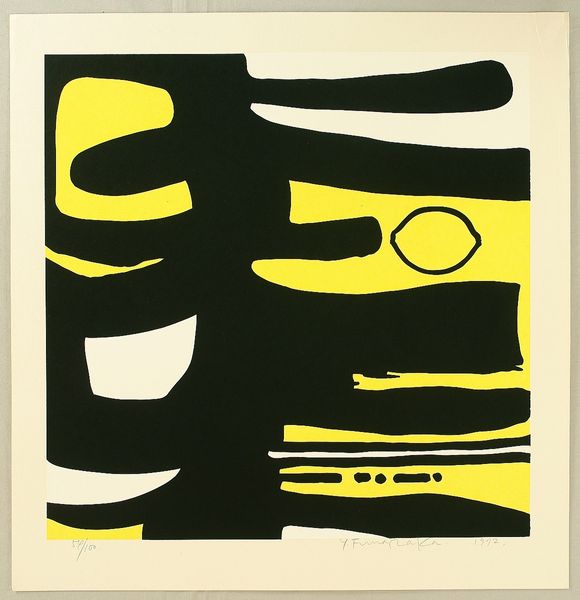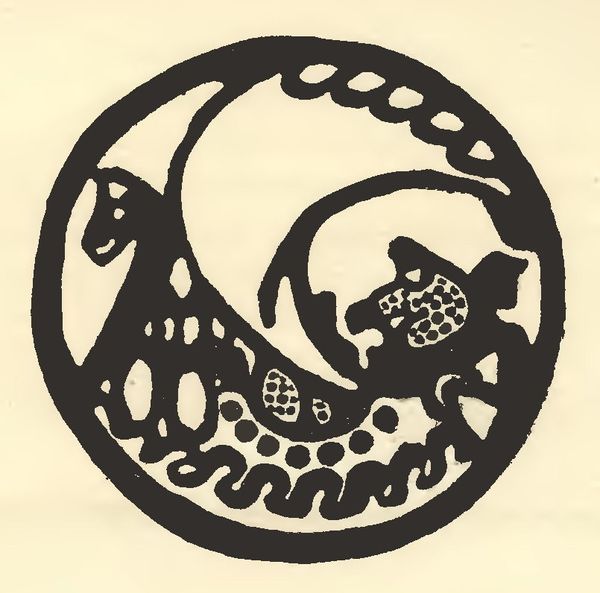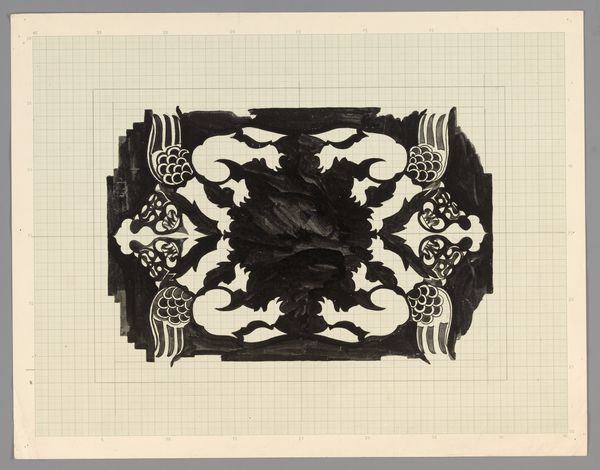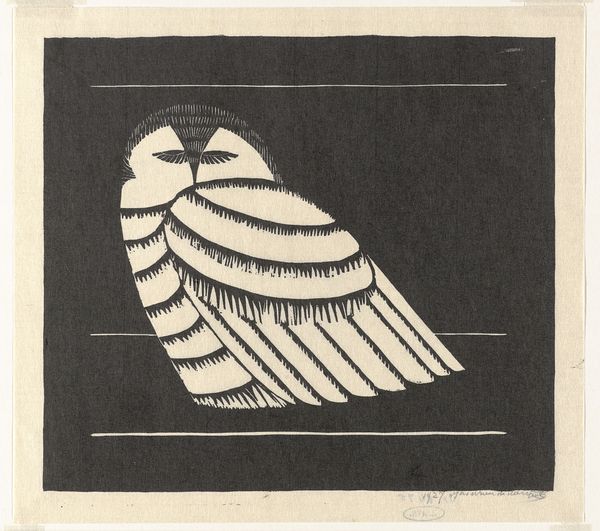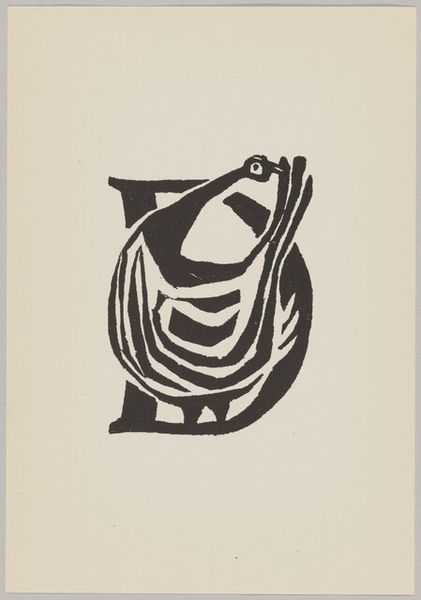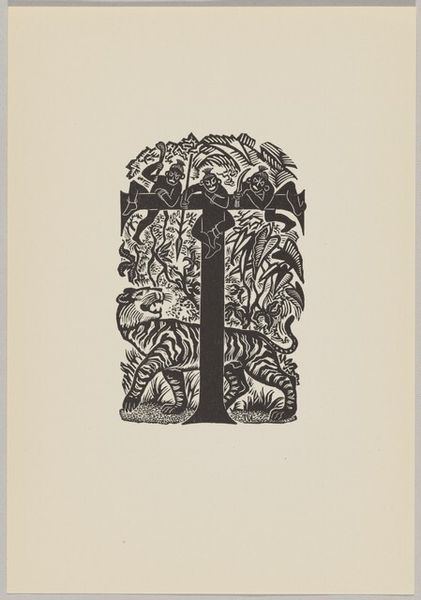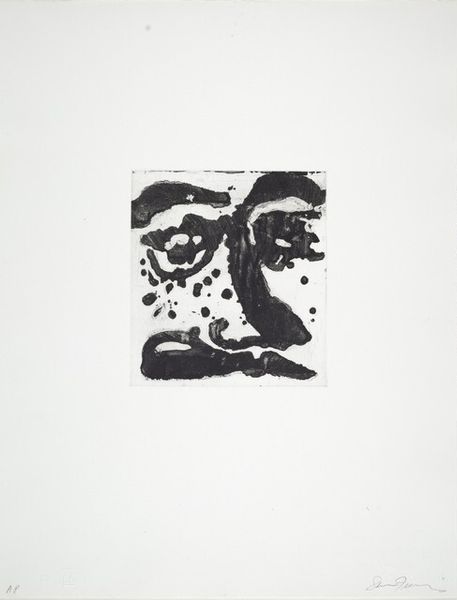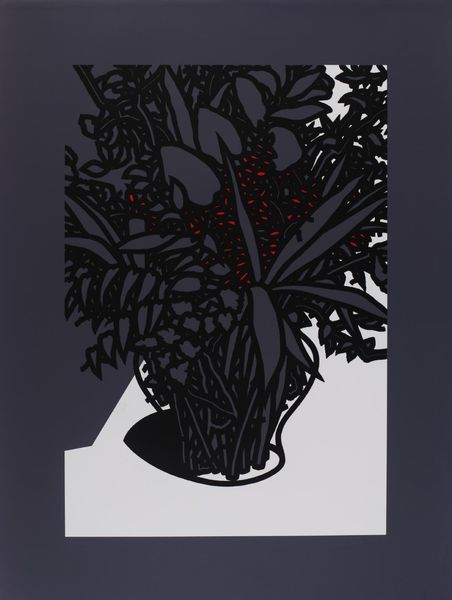
Copyright: Modern Artists: Artvee
Editor: Right, let's talk about "Le Tournesol" by Fernand Léger, from 1952, done in mixed media. The stark black lines give it such a graphic punch, but also an odd gentleness. It is really captivating! What do you make of this piece? Curator: Ah, Léger! He invites us to waltz between abstraction and representation, doesn’t he? It’s almost as if he's saying, “Let's strip the sunflower down to its architectural essence, find its joy in geometric forms and stark contrasts.” What does that sunflower *mean*, you wonder. To me, it screams post-war optimism! Think about it— the rigid forms versus the organic curves, the tension and the balance, does it strike you the same way? Editor: It does, the geometric vs the organic. That sunflower head is so intricate compared to the leaves! Curator: Exactly! And consider the limitations of his palette, and really his technique. With simple line work, Lèger constructs an entire world, you know? The flower becomes a symbol. Perhaps of resilience, or maybe the industrial era's attempt to re-define nature. What if that interplay embodies our hope and struggle to create beauty amidst destruction? Editor: That makes total sense. It is kind of amazing he could communicate that with this minimalist approach. Curator: Absolutely. Léger prompts us to look beyond the literal, coaxing out hidden emotional narratives. And now, what's *your* reading of it, my friend? Editor: I’m now viewing the piece with a new perspective on Lèger's blend of geometry and nature and how it could represent something as layered as optimism after such devastation! Curator: Precisely! Art—it's never *just* looking. It's feeling, imagining, questioning, it is living *within* the image.
Comments
No comments
Be the first to comment and join the conversation on the ultimate creative platform.
